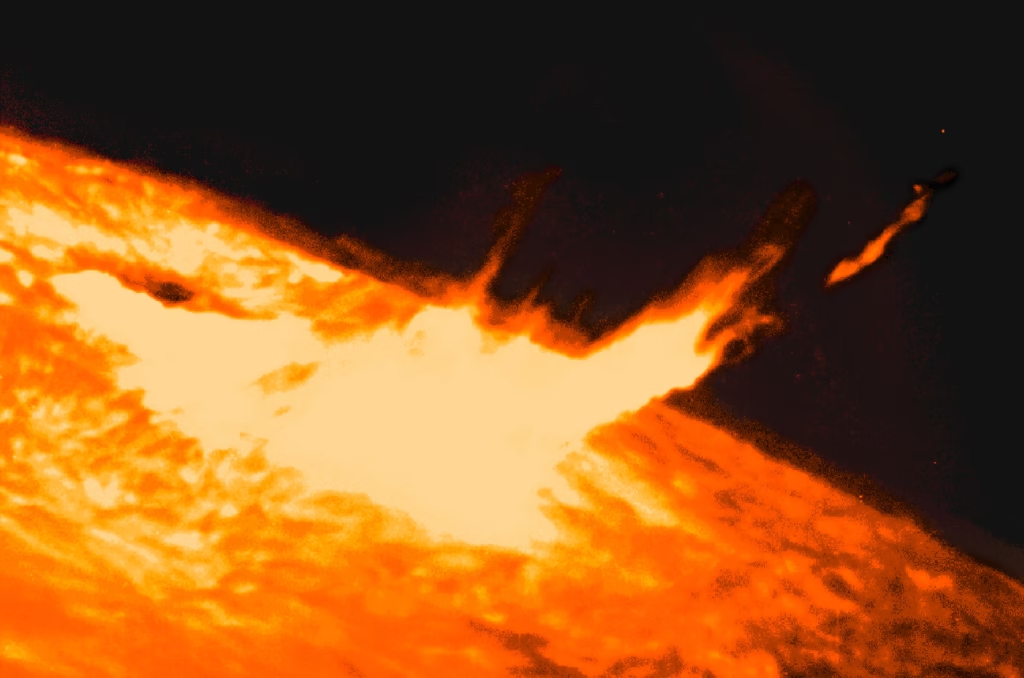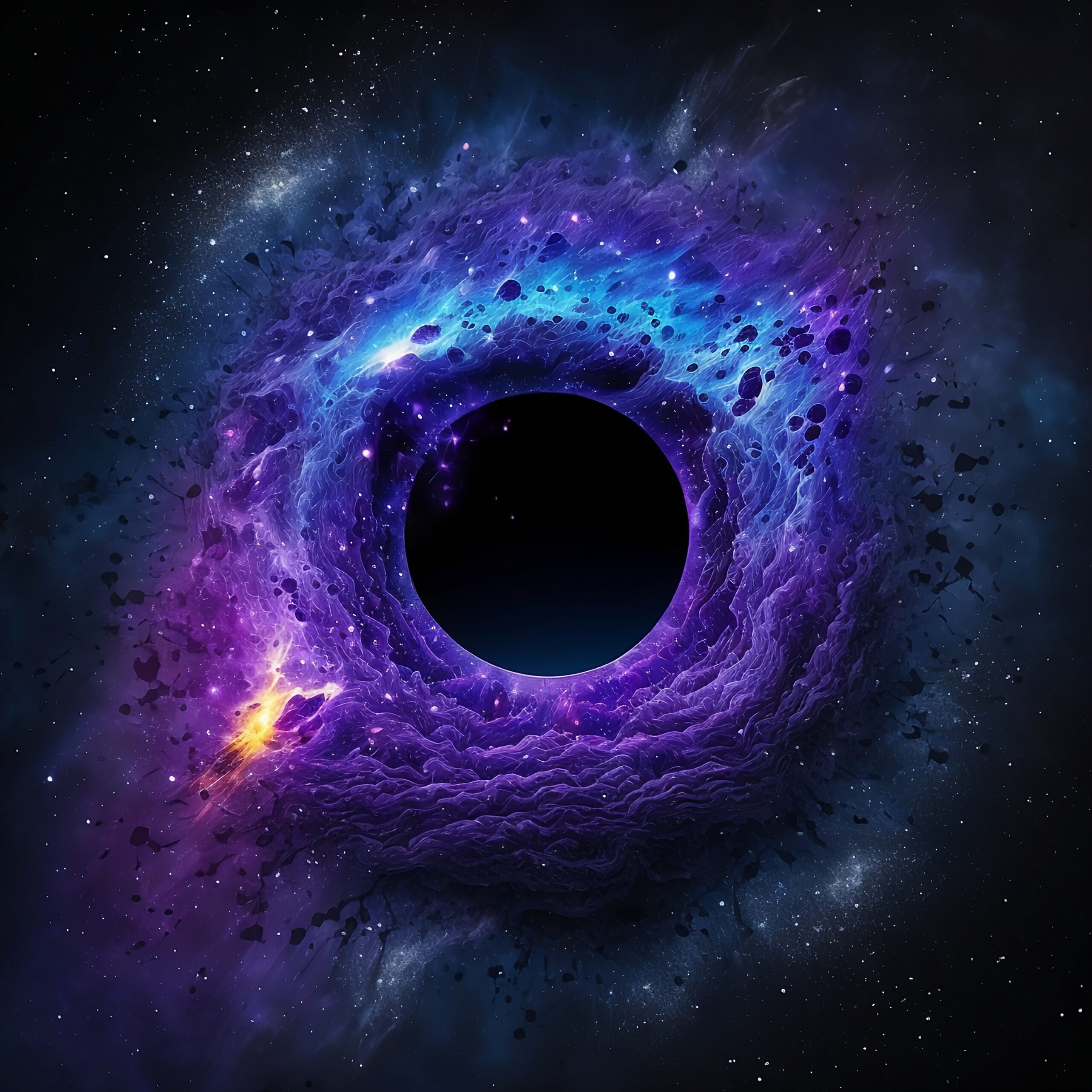Introduction
Did you know that the solar wind, a flow of charged particles from the Sun, moves up to 900 kilometers per second? This amazing force creates beautiful auroras near Earth’s poles and affects the space environment around us.
So, what exactly is the solar wind, and why is it important? Besides its beauty, the solar wind affects Earth’s magnetic field and the safety of satellites and astronauts in space. By studying the solar wind, we can protect our technology and learn more about how the Sun works and affects our solar system.
What Is the Solar Wind?
The solar wind is a constant flow of charged particles, like electrons and protons, that come from the Sun’s outer atmosphere, called the corona. It also includes small amounts of heavier ions like helium and oxygen. These particles move at speeds between 300 and 900 kilometers per second and can travel billions of kilometers, affecting the whole solar system.
So, how does the Sun create this powerful flow? The solar wind is driven by the Sun’s extreme heat and strong magnetic fields. The corona’s temperature reaches millions of degrees Celsius, which makes the Sun’s outer layers so hot that gravity can’t keep them in place. The Sun’s magnetic fields also speed up and direct these particles, sending them into space as the solar wind. This process not only changes the Sun’s surroundings but also affects planets, moons, and spacecraft across the solar system.

Page URL: https://commons.wikimedia.org/wiki/
Attribution: NSO/AURA/NSF, CC BY 4.0 https://creativecommons.org/licenses/by/4.0, via Wikimedia Commons
The Journey of the Solar Wind
After leaving the Sun, the solar wind starts an incredible journey through the solar system, spreading out in every direction. It travels across huge distances, filling a region of space called the heliosphere, where the Sun’s influence is strongest. As it travels, the solar wind interacts with planets, their atmospheres, and magnetic fields, changing their environments in different ways.
Does the solar wind affect all planets the same way? Not at all. A planet’s magnetic field and atmosphere decide how the solar wind will affect it. For example, Earth’s strong magnetic field pushes most of the solar wind away, creating a protective shield called the magnetosphere. This shield prevents the charged particles from directly removing our atmosphere and instead channels some of them toward the poles, where they cause beautiful auroras.
Planets like Mars, which don’t have a strong magnetic field, experience different effects. The solar wind can slowly strip away their atmospheres, removing lighter gases and leaving behind a thinner atmosphere. This process is thought to have changed Mars from a warmer, wetter place to the cold, dry planet it is today.
The solar wind’s journey shows how powerful it is, shaping the environments of planets and influencing space weather throughout the solar system.
Why Does the Solar Wind Matter?
The solar wind isn’t just a cosmic breeze—it plays an important role in shaping life and technology on Earth, the safety of space exploration, and the structure of our solar system. Let’s see why it matters.
Impact on Earth
One of the most beautiful effects of the solar wind is the auroras, the colorful light displays near Earth’s poles. These happen when charged particles from the solar wind hit gases in our atmosphere, causing them to glow.
But the solar wind can also be harmful. During strong solar storms, large bursts of solar wind can disturb Earth’s magnetic field, creating geomagnetic storms. These storms can damage satellites, mess with communication and navigation systems, and even overload power grids, causing blackouts. For example, the 1989 geomagnetic storm caused a major power outage in Quebec, Canada.
Can the solar wind harm Earth’s technology? Yes, it can. Since modern technology relies on satellites and electrical systems, strong solar storms can make us more vulnerable to problems.
Impact on Space Exploration
The solar wind is a challenge for space exploration. It bombards spacecraft with high-energy particles, which can damage electronic components and solar panels over time. For astronauts, long exposure to the solar wind increases the risk of radiation sickness and other health issues.
To protect against these risks, space missions use radiation shielding on spacecraft and plan missions to avoid exposure during solar storms. Advances in space weather forecasting also help space agencies prepare for solar wind events.
Role in the Solar System
The solar wind doesn’t just affect planets—it creates a huge protective bubble around our solar system called the heliosphere. This bubble shields us from much of the radiation coming from other stars, acting as a cosmic barrier. The heliosphere is shaped and maintained by the solar wind, making it an important part of our solar system’s environment.
From stunning auroras to protecting astronauts, the solar wind plays a key role in our lives and the solar system. Understanding it helps us protect our technology, plan for space missions, and appreciate the forces at work in our cosmic neighborhood.
How Do Scientists Study the Solar Wind?
To understand the solar wind, scientists use advanced space missions with powerful instruments. Two of the most important missions in this effort are NASA’s Parker Solar Probe and ESA’s Solar Orbiter.
Key Missions: Parker Solar Probe and Solar Orbiter
The Parker Solar Probe, launched in 2018, is the closest any spacecraft has ever come to the Sun. It orbits the corona, where the solar wind starts, and collects new data on the Sun’s magnetic fields, charged particles, and plasma. By studying the solar wind directly at its source, the Parker Solar Probe helps scientists learn how the Sun’s heat and magnetic forces create and speed up the solar wind.
The Solar Orbiter, a joint mission by the European Space Agency (ESA) and NASA, works alongside the Parker Solar Probe. It focuses on taking images of the Sun’s poles, which are hard to see but important for understanding the Sun’s magnetic activity. The Solar Orbiter also studies how the solar wind changes as it moves through space, giving scientists a bigger picture of its behavior.
Conclusion
The solar wind plays an important role in shaping Earth’s space environment, affecting everything from the auroras to the safety of our technology and infrastructure. By creating the heliosphere, it protects the solar system from harmful cosmic radiation, and its interactions with Earth’s magnetic field help keep life safe. However, the solar wind also brings challenges, like disrupting communication systems and posing risks to space exploration.
As we keep studying the solar wind, one key question remains: How can future discoveries about the solar wind help humanity? Understanding it better could improve space weather forecasts, offer better protection for satellites, and give us new insights into how the Sun works and the universe around us.
As we continue exploring space, let’s stay curious. The solar wind is just one of many cosmic forces that could shape our future, and by learning more about it, we unlock new scientific possibilities. Keep looking up, and never stop exploring the wonders of the Sun and space!
Share the knowledge with

